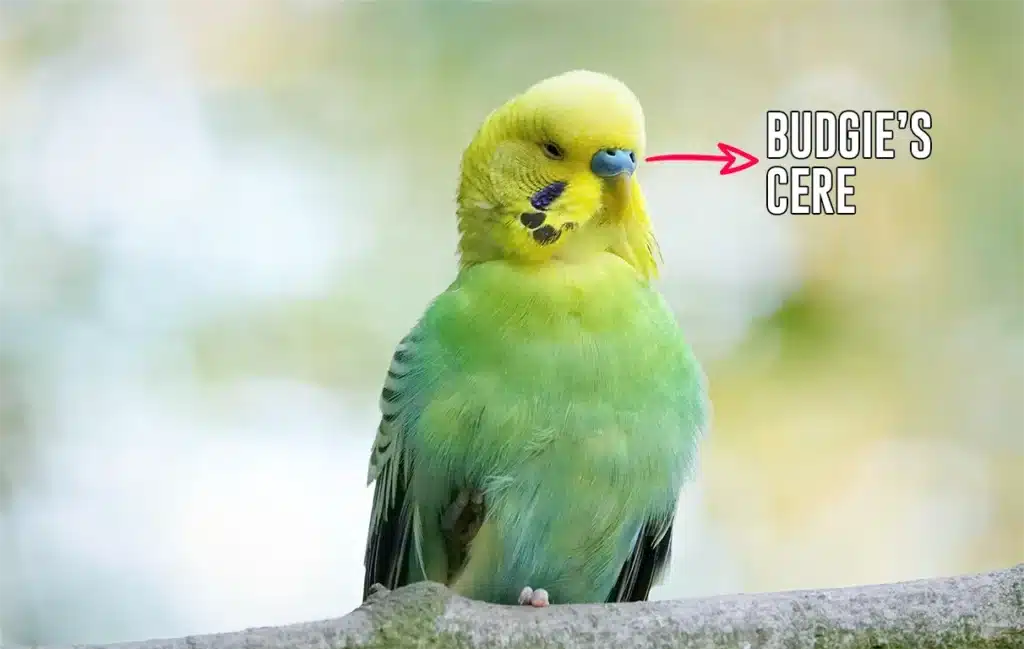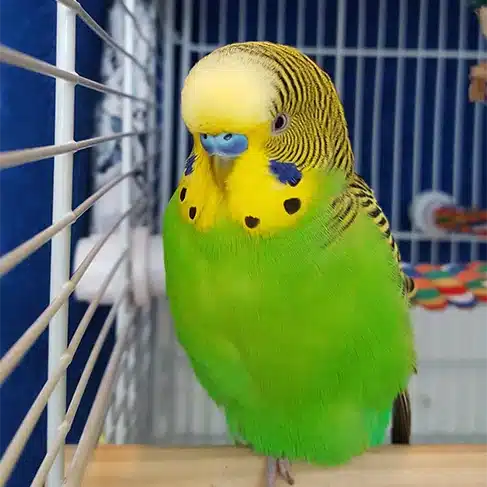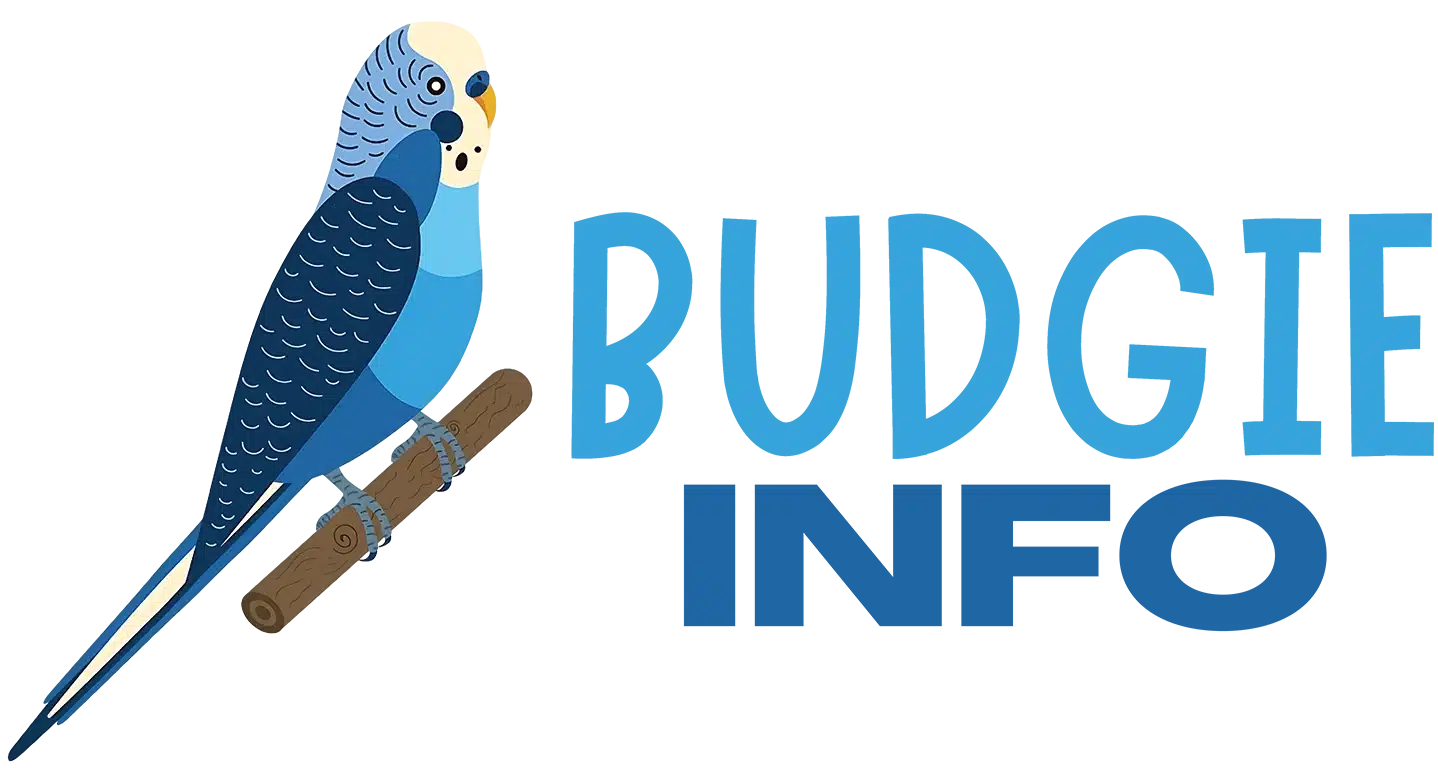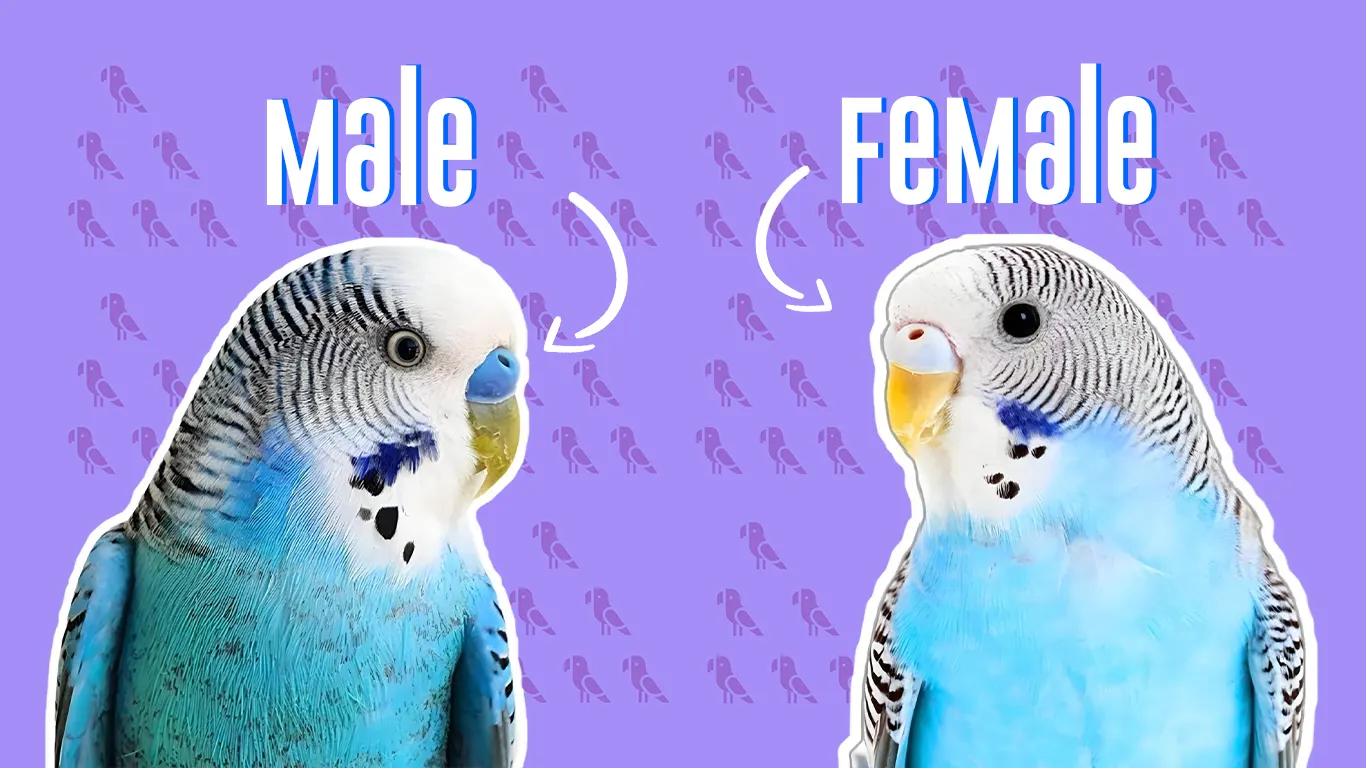Finding out whether your budgie is male or female, is an important part of taking care of them. Why?
Because a budgie’s sex can affect how they act, their health, and if they can breed. You can guess a budgie’s sex by looking at them occasionally, but DNA testing is the most accurate way.
Through this article, I will help you to identify your budgie’s gender and also discuss in detail more about this topic that you need to know as a budgie owner. So keep reading!
Understanding Budgie’s Cere
If you want to figure out if your budgie is a male or a female you need to know something called the Cere. Now you might ask, “What’s a Cere?”
The Budgie Cere is a colorful and fleshy area right above your budgie’s beak, near the nostrils. However, this small area is your key to determining your budgie’s gender.

The cere’s color and texture are big clues. Usually, in grown-up budgies, the males have a bright blue cere while the females have a brown, white, or light blue one. But it’s not always so straightforward.
Did you know that your budgie’s age, health, and even its specific breed can change these color patterns? Surprisingly, in some types of budgies, the males can even have a brown cere!
Here I added a table that shows the Cere color differences in male and female budgies:
| Budgie Gender | Cere Color in Adults | Extra Notes |
| Male | Bright Blue | Consistent in most standard varieties; can be purplish in some mutations. |
| Female | Brown, White, or Light Blue | Brown indicates breeding condition and white or light blue in non-breeding condition. |
Note that: Young budgies and certain mutations may not adhere strictly to these guidelines.
In adult budgies, you can tell if your budgie is a male or female by looking at the color of the cere. This method has over a 90% accuracy rate. But remember, things like your budgie’s age, health, and specific mutations can affect the cere color.
Moreover, young budgies are a bit tough to identify by their cere color, so you may need additional methods for accuracy.
Color and Behavioral Clues in Budgie Sexing
Do you notice how some budgies seem to have a certain flair or attitude? Their personality shines through, but these characteristics are important for budgie sexing.
Related Post: Budgie Varieties: Know Their Types, Colors, Genetics & More
However, I want to share some interesting insights about budgie feather coloration and behaviors. These insights will focus on the differences between males and females.
Male Budgies
Male budgies are often show-offs with their bright and bold feathers. Think of them as the peacocks among budgies! In addition to their looks, male budgies tend to be more vocal and social.
They love to sing, talk, and interact either with you or other birds. If you ever see your male budgie bobbing his head and chattering, that’s him being friendly.
Female Budgies
Female budgies have their own charm, even if they are not as colorful as males. They are more subdued in feather coloration and a bit more on the independent side. Behaviorally, female budgies can be more assertive and territorial, especially around nesting areas.
Remember, these are the general observations. Individual personalities can vary. However, they are useful clues to determine if a budgie is male or female.
Take A Closer Look at Size, Posture, and Feather Patterns
I hope you have got a clear idea about cere and behavior of budgies. Now let’s talk about their physical build.
You can tell the gender of budgies by looking at their size, posture, and feathers.
Male Budgies
- Size: In general, they are slightly bigger and have a stronger, rounder look.
- Posture: Males often have a more relaxed and laid-back posture.
- Feather Patterns: Males usually have more uniform and brighter feather patterns. They appear as though they are donning a well-fitted suit!
Female Budgies
- Size: Female budgies are usually a bit smaller and have a smoother, more streamlined look.
- Posture: They often have a more upright and alert posture.
- Feather Patterns: The patterns on their feathers may appear less distinct. They have a more relaxed appearance as if they prioritize comfort instead of flashy styles.
Genetic Testing: An Advanced Technique to Identify
Genetic testing is a simple way to determine whether your budgie is male or female. It involves checking your budgie’s DNA, usually from a few feathers or a blood sample. This method will give you 100% accuracy in confirming the gender of a budgie.
However, this process helps in situations where cues are unclear for budgies. It’s also helpful with certain mutations and juvenile budgies.
Many bird vets offer this service and it’s quite straightforward. They collect the sample, send it to a lab, and soon you’ll get a definitive answer. So, if you’re unsure about your budgie’s sex, genetic testing is a reliable way to find out.
Special Considerations for Budgie Mutations
Budgie mutations can make it hard to tell if your budgie is male or female using the usual methods!
Take a look at albino or lutino budgies, for example. They don’t have the typical color pigments. This means the color of the cere (the area above their beak) isn’t a good clue. In albinos, both males and females often have a light blue or pinkish cere that doesn’t change much. Then, there are pied budgies with irregular color patterns. These can hide the normal feather color clues.
So, now what does this mean for you as a budgie owner?
It’s important that you have to know about these special traits. If your budgie’s mutation makes it difficult to tell their sex traditionally, then genetic testing can be really helpful. Because it gives you a straightforward answer.
Practical Tips for Budgie Owners
Let me share with you some practical tips I’ve picked up along the way for budgie sexing at home. With a little observation and patience, you can become quite the expert yourself!
- Observe the Cere: This is your starting point. Look for the color indications we discussed earlier, bright blue for males and brown, white, or light blue for females in most cases.
- Watch Their Behavior: Does your budgie talk a lot or is it quiet? Males are generally more vocal and social, while females can be quieter and more territorial.
- Consider Age and Breed: Remember, young budgies and certain breeds might not show the typical cere coloration. Patience is important here!
- Note Physical Traits: Look for differences in size, posture, and feather patterns. These can give you additional clues.
PRO TIP: keep a journal! Note down your observations over time. You’ll be amazed at the patterns and behaviors you’ll start to notice!
So you have finally come to the end. Through this article, I hope you learned something important about Budgie Sexing and you’ll be able to determine the budgie’s gender easily.

I’m Shajid Rahman, a happy owner of 6 beautiful budgies. I take care of this website to share tips, fun facts, and care guides about these birds.
Whether you’re a budgie lover or considering one as a pet, you’ll find helpful info here! I love these cute creatures, so I made this blog for Budgerigar fans. You can expect to get reliable information based on my years of experience. More About Me →

